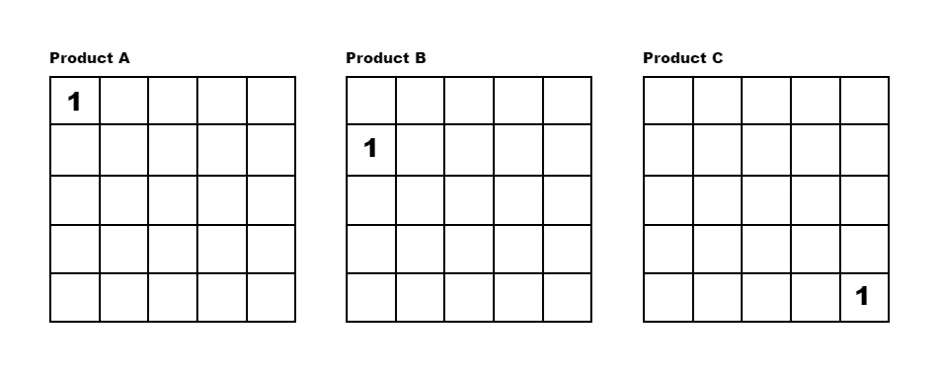Meet Claudette! A thirty-something-year-old art gallery curator on her evening commute. The nine-to-five isolation is terminated as she leaves the gallery, takes out her iPhone and opens Spotify.
It was July 2015 when she noticed an unsolicited playlist called Discover Weekly. She immediately Googled it to realise this was no ordinary list of suggestions. Spotify, the game-changer, is persistent in pushing the envelope. Discover Weekly might look like a few songs you probably like at first glance. But it was much more than behind the curtain: predictive analysis, machine and deep learning, collaborative filtering backed by real-time data management (using the open-source Kafka), and natural language processing (using Echo Nest acquired by the company), among others. In a nutshell, Discover Weekly looks at Claudette’s history to find similar playlists containing her favourite music. This leads to other shared songs she has not heard, and those are the ones that show up on the playlist after a wondrous journey. It must be perfect on paper.
Claudette plays the first song on this week’s list. A new single by Lykke Li sharpens her ear. Next, a string quartet from Béla Bartók, her favourite Hungarian composer. She finds pleasure in finding new intelligent company. She will most probably extend her premium membership.
A few weeks go by. Upon every attempt at the playlist, she adds a pleasant vibe or two to her wide spectrum of tastes ranging from Afropop to krautrock and from Bowie to The Buena Vista Social Club. This is that one convenience store with a limitless candy supply.
Candy, well, except that one week when Claudette suddenly moved the list down the pile and never looked back. Claudette is a “Rogue Node”, and you, as a digital marketer in this pandemonium of amazing ideas, should probably leave her alone. Here is why.
Detecting A Rogue Node
Rogue Nodes are hard to spot. Without a good eye on analysis, they behave like the rest of us for the better part of the time we inspect them. But we lose them if we only play by the textbook. For starters, we find almost no heat on their heatmap of interests.
Here is an example. An online shop sells a collection of related products. To increase ROI and customer satisfaction, it hires our company to adopt predictive analysis to recommend their next purchase based on their history. In other words, we are looking for similar products they might like.
“Similar”, however, is not as simple a factor as it sounds. In what way is Wristwatch no.1 similar to Wristwatch no.2? Colour, brand, the state of being mechanical or quartz and country of origin show just the tip of the iceberg. We need to quantify our items, and this demands its own article. So, let us try an oversimplified version of what we just failed to describe.
In our new simple dimension, there are 25 products, the similarity of which is measured by their position on a 5×5 matrix. Each unique product is identified by its position of the value one inside the matrix.

Assuming one can only traverse the matrix either horizontally or vertically, the similarity of A, B and C in the above figure can be described in a statement like this:
“Product A likens B more than C.”
In fact, A and C could not be any more different, knowing one needs eight hops (4 vertical + 4 horizontal) to go from A to B, whereas A is only a single vertical hop away from B.
Now, if we stack the entire purchase list of customers X and Y, we may end up with the following matrices. In other words, each matrix in the below figure is a purchase history which is a collection of products.

Customer X has made 21 purchases of 5 different products so far. Judging by the area s/he has not yet covered, X will likely embrace the idea of buying the following product.

As for Customer Y, 24 purchases are spread across the entire realm of variety. Y is only a single brick away from straight flushing the inventory.

This brings us to my prediction: try hitting Y with the above product and expect a cold shrug. Continue filling the void for people like Y and watch them populate the dreaded opt-out list.
Let’s not forget that if all the above purchases have taken place within a specific interval, Y has been more active than X (24 purchases as opposed to 21) and will somehow get a higher ranking in our analysis. Moreover, the similarity matrix can tell us a thing or two. It tells us where to find the next best offer and which far-fetched areas to avoid. But the most important thing it tells us is to draw a line between X and Y. The former you know how to deal with. The latter is a rogue node.
Tending the Outliers
Once we detect the rogue nodes, treating them like the commons is a shallow approach surprisingly adopted by many. In addition to Spotify, Claudette has also been a member of an online book store with more than 50 purchases over the years and a passionate opt-in for what is out to hunt. Her newsletters are, painfully enough, a stream of lacklustre “deals” on pocket editions of A Girl with A Dragon Tattoo and Meathead: The Science of Great Barbecue and Grilling. If the predictive analysis is on their agenda, the similarity matrix most probably does not play a part.
Digital marketers target active customers. Especially the ones who have made a purchase recently. But is a broadcast of an offer always the best way of reaching people? Is telling them what they might be missing the most ethical way of keeping them coming back? This seems like a valid strategy for the bigger part of our customer base. For the rogue nodes, though, we should probably go off the beaten path.
Rogue nodes are reluctant to hear what they are missing. It is even more irritating for them to tell we know what their next move might be. Before you know it, they have trotted the uncharted territory. The final straw on a marketing journey with a rogue node is when they feel under-appreciated. Where a common customer gets a subtle recommendation, a rogue node is given another item s/he does not need. Time is probably ripe for them to move on.
A good way to deal with a rogue node is to avoid tricking them into buying more, slow down the ROI train for a while, and let them know they are visible. A rogue node is an avid seeker. A coupon to get a free book or subscription month on their next purchase goes a long way. It does not always have to involve money, either. A badge on a profile page can make a teenager’s day perfect. Make sure the badge does not appear on the very next profile. So long as they do not feel obliged to drive on your righteous path, they are happy to tag along.
Easier said than done, I admit. Dumbing down our chaotic world of infinite variables into plain matrices is nothing but wishful thinking. Knowing we are quite a few steps away from analysing the entire world, going simple is a start.
We can calculate similarity based on metric pairs or triples. E.g. [genre + topic] for a book, [colour + flavour + #sold] for a toothpaste, etc. Building heatmaps on a single view of customers reveal their interest terrain. Defining a separate strategy for rogue nodes comes next. What your business is going to do about them is not my business. But if you have completely ignored them so far and are not willing to engage, do not blame your least-expected churns on the weatherman.
Written by Pedram Mobedi
Contact us